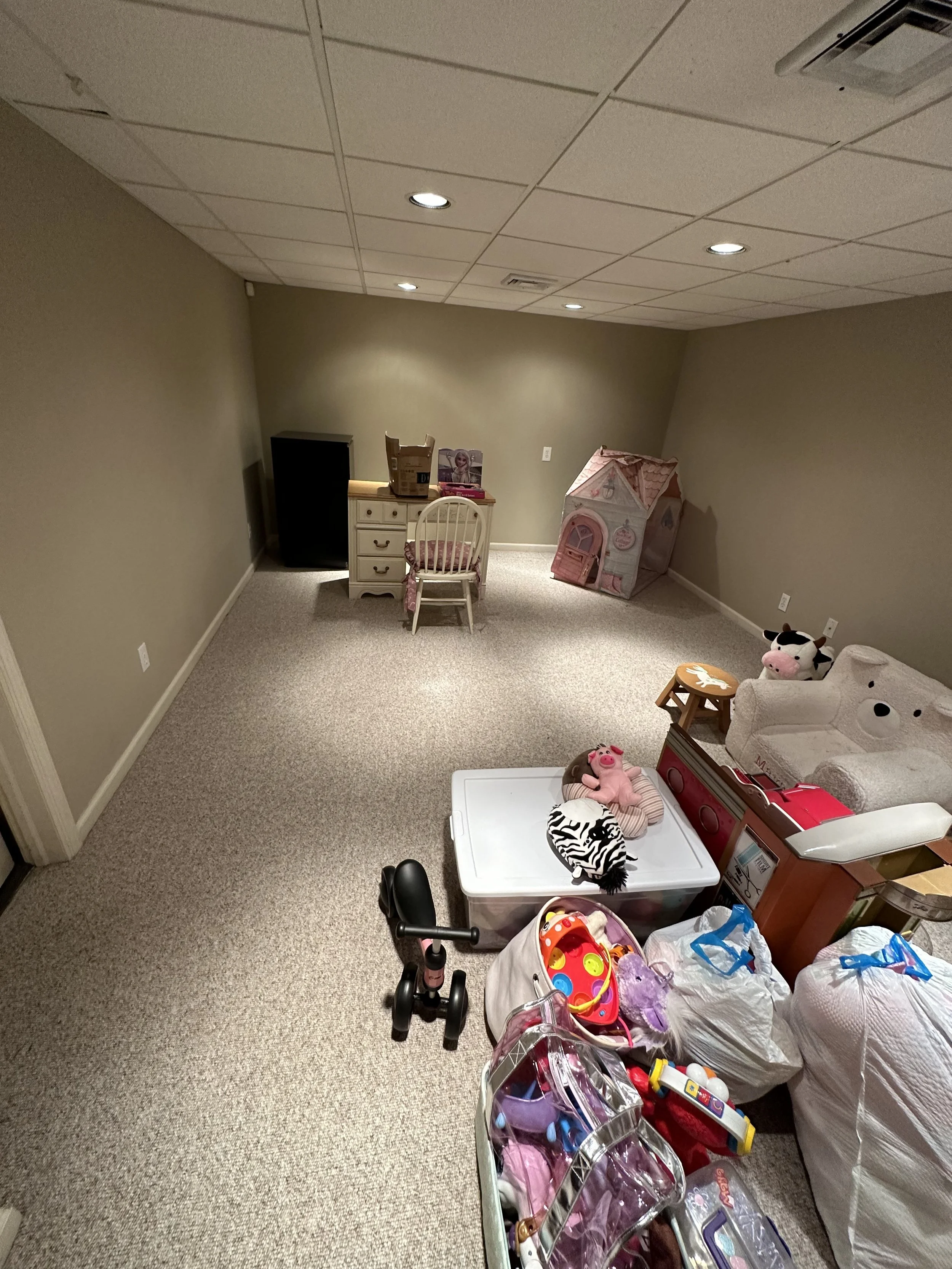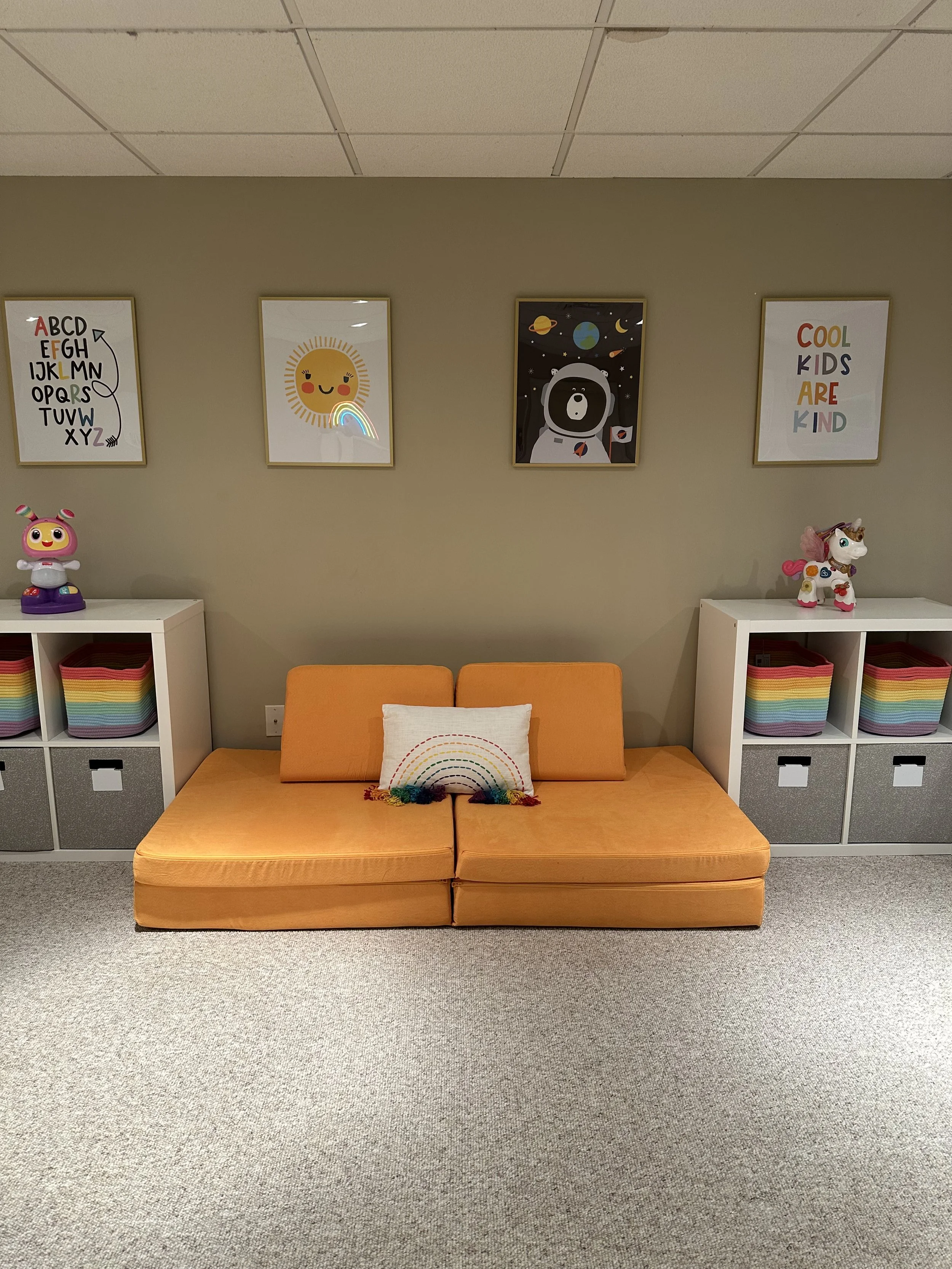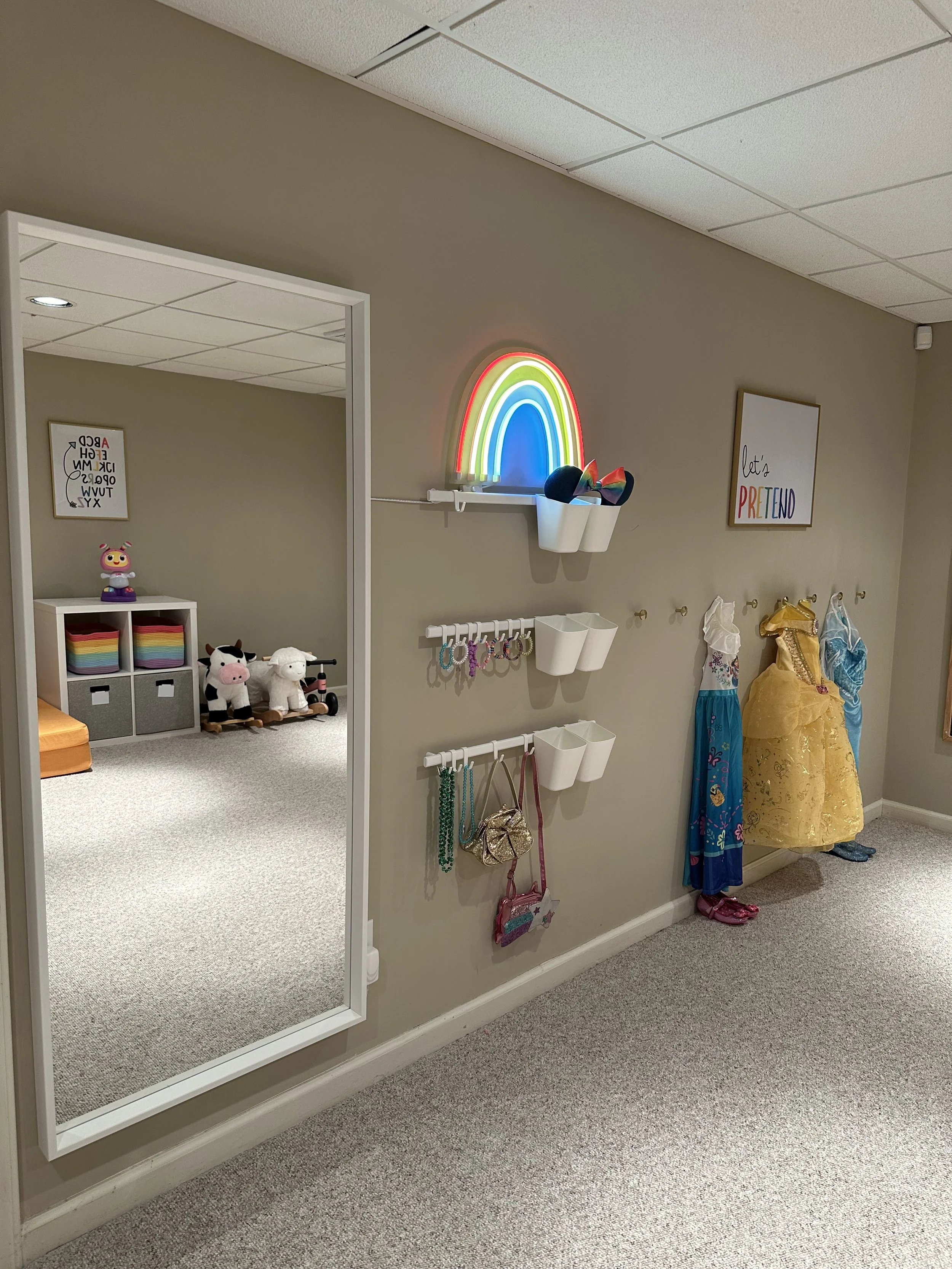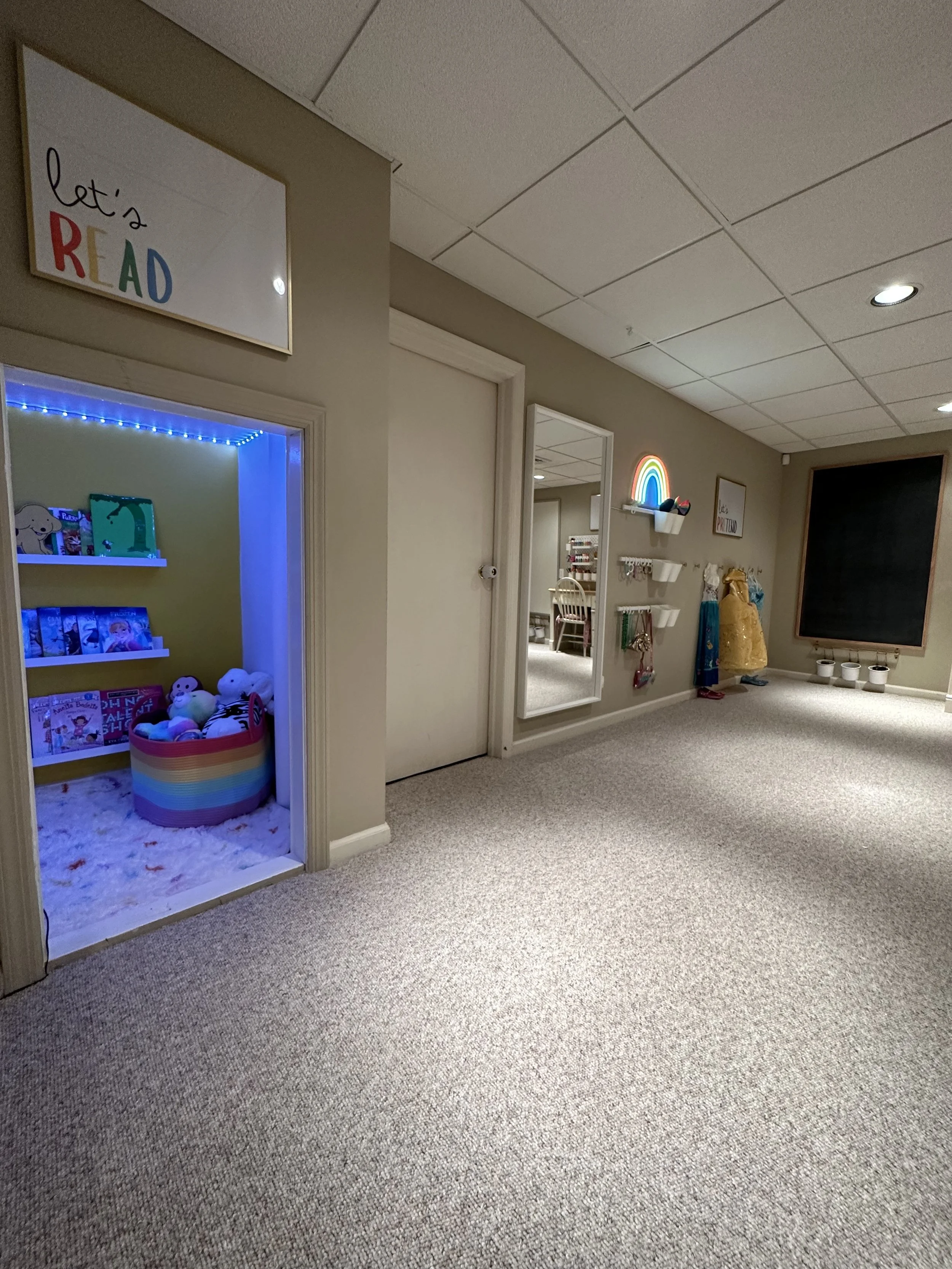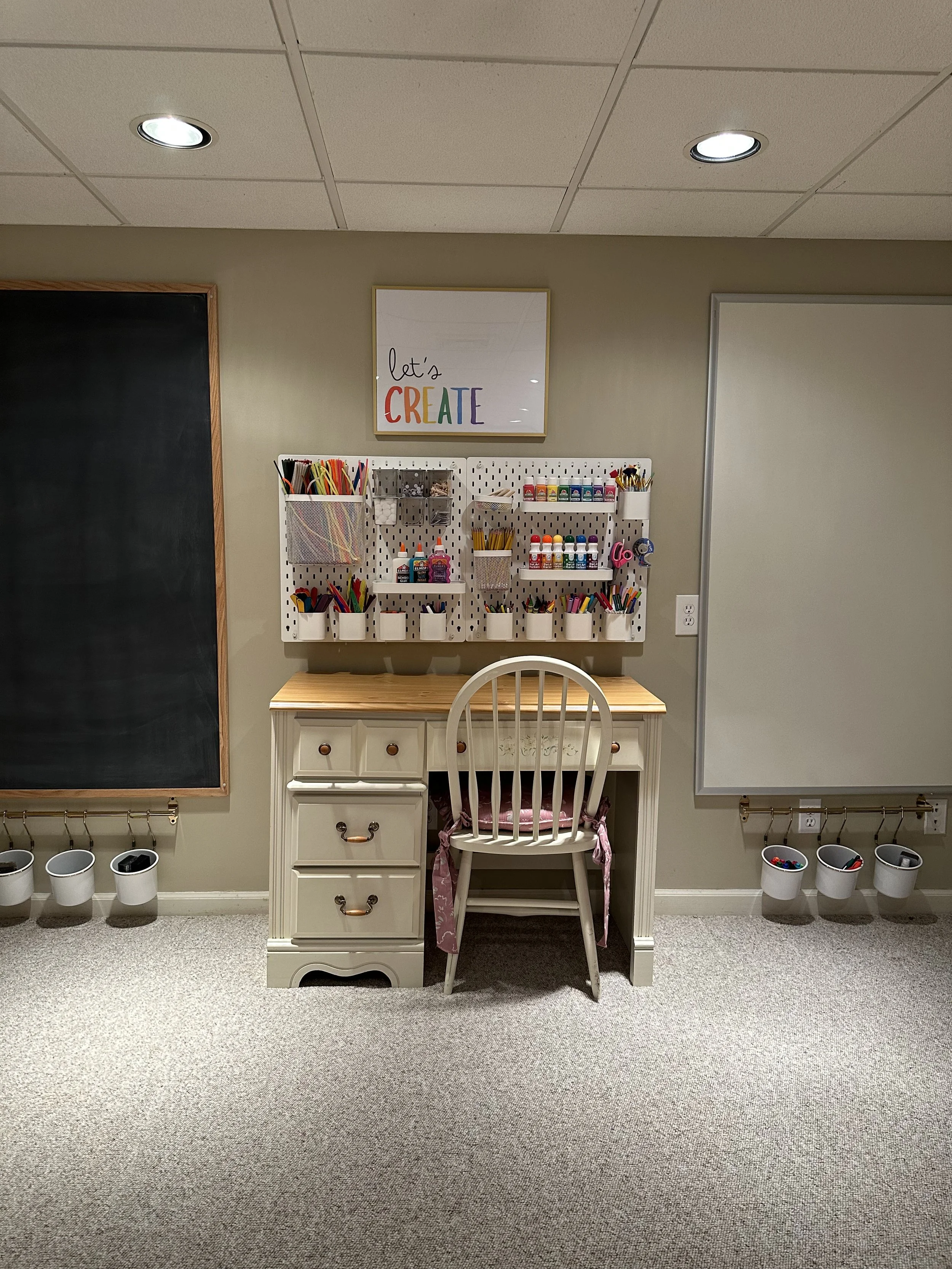Playroom Must-Haves from a Professional Organizer
Playrooms are one of the trickiest spaces in the home. They’re meant to be fun and creative for kids, but at the same time, parents want them to be functional and organized (and ideally not a total disaster zone). That’s why I was so excited to connect with Carol from Bringing Tidy Home to talk all things playrooms.
Carol is the founder of Bringing Tidy Home, where she helps families create spaces that are both practical and beautiful. She has a special gift for designing playrooms that grow with children, encourage real play, and actually make life easier for parents.
I was happy to pick her brain and hear how another organizer approaches these busy, kid-centered spaces. Our conversation confirmed what I always tell clients: a great playroom isn’t just about toy storage—it’s about creating an environment where kids want to play and parents can breathe a little easier.
A Basement Transformation Fit for a Birthday Surprise
When I asked Carol about her favorite playroom project, she told me about a basement she transformed as a surprise for a little girl’s fifth birthday.
The space had a charming under-the-stairs nook that Carol turned into a cozy reading spot with floating ledges, hung pictures, a soft rug, and piles of pillows and stuffed animals. She added a big mirror with gold hooks nearby for a dress-up corner and displayed shoes neatly underneath—it was a dream setup for pretend play.
One thing Carol emphasizes is that she doesn’t like to splurge on big playroom furniture. Instead, she gravitates toward affordable, flexible options—often from IKEA—that can evolve with the child. For example, cubbies are one of her staples because they work for both big toys and books, and later can be styled for older kids.
Zoning the Playroom
One of my favorite tips from Carol is how she “zones” playrooms by wall. This helps keep things simple and makes cleanup easier for kids and parents alike.
In the birthday basement project, she set up:
Pretend Play Zone with dress-up clothes and a mirror.
Arts + Crafts Zone with a repurposed desk and a pegboard-like wall for scissors, crayons, and supplies.
Building + Toys Zone for things like blocks, sensory toys, and figurines.
This simple method creates structure without limiting creativity—it’s clear where things go, and it helps kids develop independence in cleaning up.
Inspiration & Must-Have Products
Carol shared that much of her inspiration comes from her own kids, ages five and seven. Being in the trenches herself helps her understand both what kids want (fun, easy-to-grab toys) and what parents need (less clutter, more order).
Here are her top playroom must-haves:
Zippered Mesh Bags (IKEA) – collapsible, affordable, and perfect for corralling toys.
Cubbies (2x2 or 2x4) – simple, flexible storage that grows with the child.
Bins (Target) – fabric bins for hiding toys or clear acrylic bins when you want visibility.
And just as important, Carol has strong opinions on what not to buy:
Three-tier angled bins – she finds they get messy fast.
Toy chests – too much gets piled in one place.
Overstuffed bins – kids end up dumping everything out to find one toy.
Her philosophy? Keep it simple. Kids really only want to play with two or three things at a time—so don’t overwhelm them with too many options.
Smart Storage for Small Toys
When it comes to tricky little items like LEGOs or figurines, Carol recommends:
Mesh pouches for separating sets (like Paw Patrol from superheroes).
Smaller bins dedicated to categories so kids can quickly find what they want.
Labels Kids Can Use
Carol also had a clever tip for labeling. Since most kids can’t read yet, she suggests:
Using stickers (e.g., a frog sticker for the magnet tiles bin).
Trying dry-erase doodles directly on bins.
As kids grow, you can transition to written labels, but this keeps things simple (and fun!) for little ones.
Budget-Friendly Favorite
Carol’s go-to budget-friendly playroom item? The IKEA KALLAX cubby unit. It’s affordable, adaptable, and works with bins, baskets, or styled shelves. She uses it in nearly every playroom she organizes.
Final Thoughts
What I loved most about my conversation with Carol is how practical and child-centered her approach is. Playrooms don’t have to be Pinterest-perfect or filled with expensive furniture. With smart zoning, simple storage, and a few thoughtful touches, they can be both magical for kids and manageable for parents.
At the end of the day, a well-organized playroom isn’t just about where toys go—it’s about creating a space that invites play, sparks imagination, and keeps kids off the iPad (at least for a little while!).

